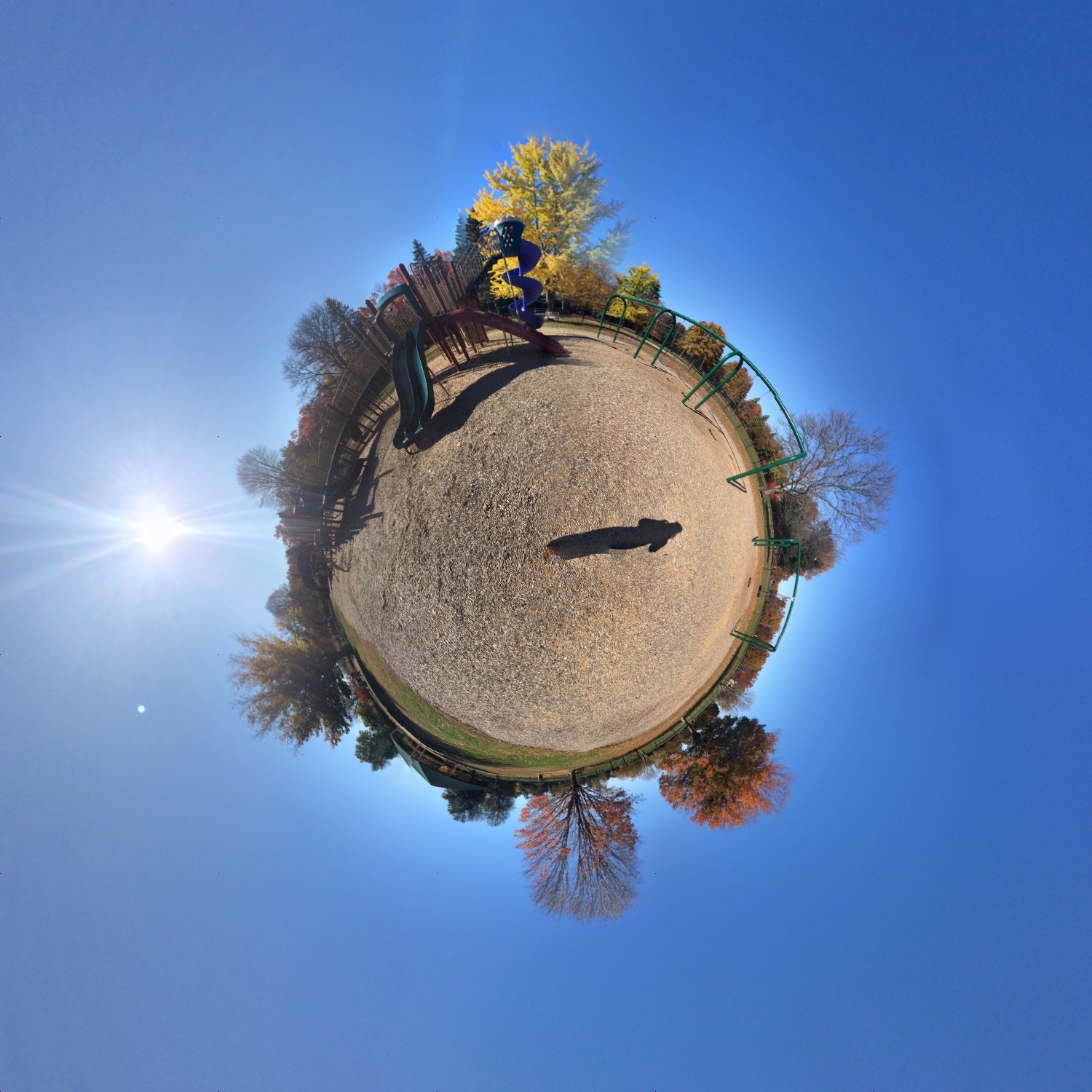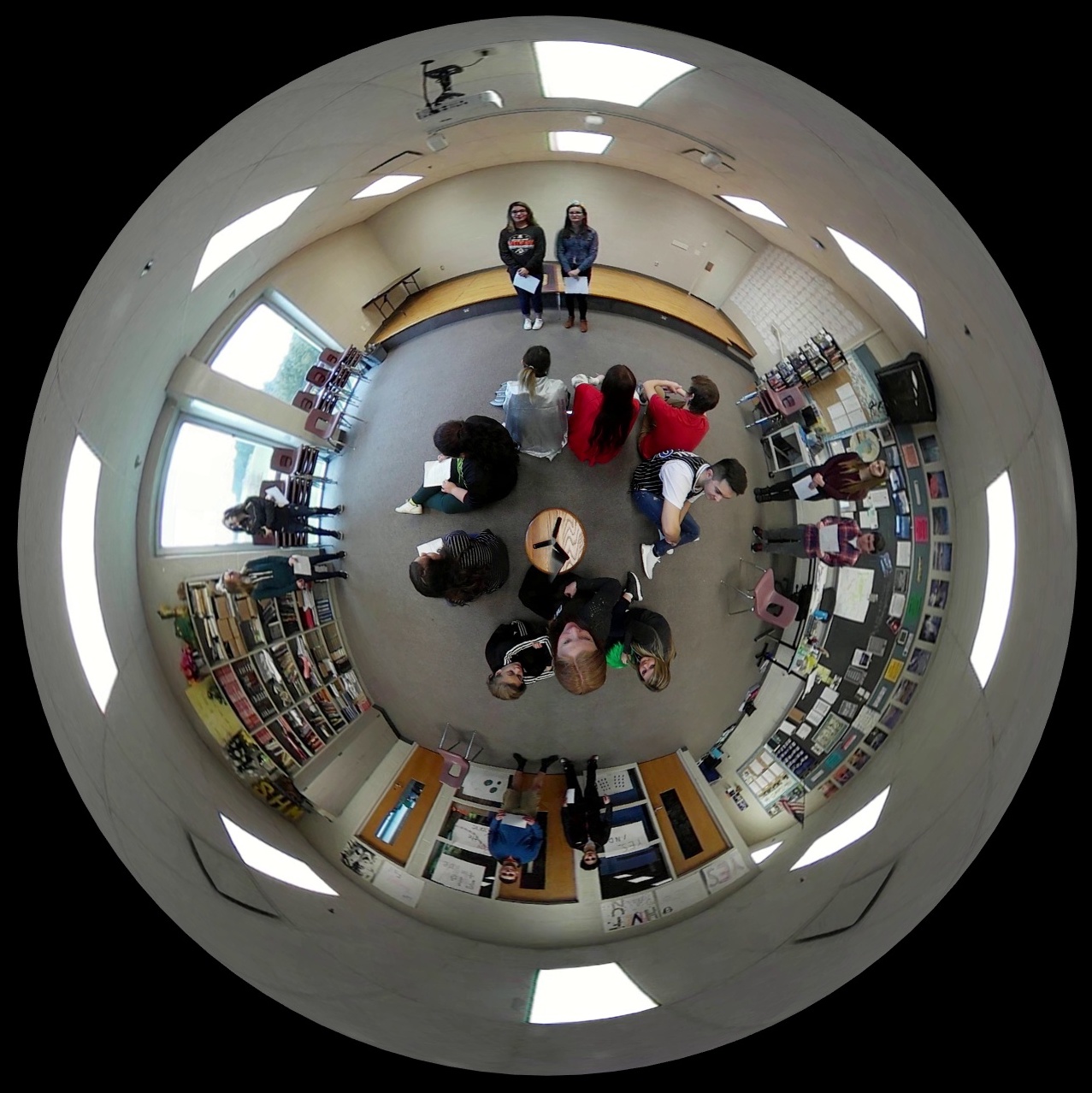We are still just skimming the surface of what is possible as we look to incorporate 360 VR videos into our curricular decision making and experiential programming.
Below is a selection of videos that illustrate a number of pedagogical purposes behind creating and implementing VR content into a teacher preparation program. In the future, we hope do establish and curate a larger archive that includes searchable content that can help teacher preparation programs provide VR Experiential Learning (VREL) opportunities focused on classroom practice, but also includes a variety of cultural components that can provide access to learning environments not directly accessible to colleges and universities.
Cross-Cultural Immersion
The Akaa Project Reading Buddies – As a part of a visit to the Asiafo Amanfro Community School in Ghana, students were able to serve as reading buddies with the 6th Grade students. This short clip provides context for the school space, in this case the library, and takes us inside a very intimate moment of sharing.
Asiafo Amanfro Community School: Classroom Interior Space – There is a significant benefit to being able to simply explore a learning environment for the purpose of observation and reflection. This short clip is of an empty upper elementary classroom. In the future, we would like to develop 360 still images that allow the viewer to “move” with in the space in order to get closer to certain objects. However, in moving to a still image, you would lose the ambient sound which adds considerable value to this clip.
Recess at Asiafo Amanfro Community School – This footage highlights the ability of 360 videos to put you in the middle of the experience. In this clip, students are playing a typical recess activity called “Fire on the Mountain.” Similar to Duck-Duck-Goose, one student circles the group as the entire group chants, “Fire on the mountain! Run! Run! Run!” The student circling has a stone that they are trying to secretly place behind one of his/her classmates. When the stone is placed, the chant changes to “Come for you!” This signals the students to look behind them to see if they are now “it”. See if you can follow the students as they circle the group, or feel free to focus in on one student/section of students to see how they connect with the activity.
Early Childhood Education
Pre-School Call to Circle (360): This video illustrates preschoolers joining the morning circle time in a play-based preschool classroom. It is captured with a virtual reality 360 camera, providing viewers with a more dynamic perspective on the environment, interactions, and flow.
Pre-School Call to Circle (Flat): This video illustrates preschoolers joining the morning circle time in a play-based preschool classroom. It is captured with a traditional video camera placed behind some of the students and circle.
Pre-School Animal Discussion: This video illustrates preschoolers during morning circle time discussing animals as pets. It is captured with a virtual reality 360 camera, providing viewers with a more dynamic perspective on the discussions, management of the group, and environment.
Pre-School Free Play: This video illustrates preschoolers participating in free play activities in their preschool classroom. It is captured with a virtual reality 360 camera, providing viewers with a more dynamic perspective on free play, interactions, and the classroom environment.
Montessori School Whole Class Meeting: This video illustrates 3rd-6th graders participating in a large group discussion of the upcoming, afternoon activities. It is captured with a virtual reality 360 camera, providing viewers with a more dynamic perspective on the classroom environment, the use of instructions, and the interactions with the teacher and among the students.
Secondary Schools
Theater Education – Stage Direction Scenes: This video illustrates a dynamic facilitation strategic where acting teams simultaneously perform scenes of identical content, but individualized interpretation and blocking.
Campus Orientation #1 – Box Hill School (Surrey, UK): This video is a more typical representation of how schools can use this technology to provide context and a general orientation for the benefit of those who are not familiar with a location.
Campus Orientation #2 – Kent School (Kent, CT): This is a bit more advanced version of the above that seeks to integrate more personal elements in an effort to provide an immersible experience related to their school’s culture.
36o Photography (Photoshperes): Beyond the video potential for VR, you can also use 360 cameras to capture images that would be difficult with other recording equipment. The 360 lens layout allows for truly unique perspectives on classroom space. Below are three examples of “tiny planet” images which refers to the way in which the image is stitched together.
In addition to these static images, below are three examples of high resolution 360 (sometimes called panoramic) photography. Currently, we do not have any high resolution imagery of interior classroom spaces, but these examples illustrate some of the features that can be incorporated.
First is an example from veer.tv. This is an online community where 360 photographers can share their latest creations. This image highlights the ability of these cameras to convey depth and scale in a way that typical photography cannot.
Next we have an example from Kuula.com. Like veer.tv, Kuula is a community of 360 artists. It seems that Kuula has a larger database of images, but both sites are dependent on what artists have posted. We envision a site similar to both veer.tv and Kuula as a repository for this type of 360 content with a focus on schools and classrooms. This example gives us an opportunity to explore something distant in very close proximity.
Our final 360 image is the Chapel of Horus, Temple of Seti I, Abydos, Egypt. We use this image to highlight the interior and spatial qualities that 360 imagery provides. In addition, by visiting the original source, you will notice that this image is actual part of a larger virtual tour of the chapel and surrounding areas. In this way you can provide very detailed tours of a learning environment that would allow students to “move closer” to objects and spaces within a classroom to have a better view.
http://www.360cities.net/image/chapel-of-horus-temple-of-seti-1-abydos-egypt#362.36,-6.02,90.0



